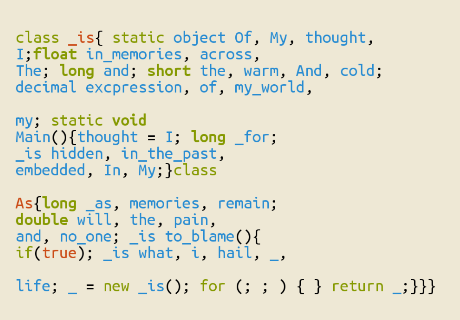
One of the questions that motivated me while I was working on my master’s degree was the differences between handwriting, printing and digital writing. Dennis Tenen’s new book, Plain Text: The Poetics of Computation, contributes to to that discussion.
Tenen points out that the major change between electronic writing and previous forms is that in electronic writing there is a separation between the act of writing and the support (i.e., what the writing is written on).
This becomes evident when we ask ourselves, while looking at a screen, “Where is the text?” Of course on one hand the text is on the screen; but on the other, it exists in electromagnetic storage somewhere we cannot directly see. In some sense, the writing is in both places. Tenen writes, “One must be translated, transformed into the other.”
This transformation occurs in what Tenen calls the formatting layer of electronic texts, which is where we may find censorship, DRM, ads and even spyware. Thus what we see on the screen is only the tip of the iceberg. Tenen:
At the maximally blunt limit of its capabilities, format governs access. Commands render some words and sentences visible on-screen while suppressing others. … The formatting layer specifies the affordances of electronic text. More than passive conduits of meaning, electronic texts thus carry within them rules for engagement between authors, readers, and devices. … Whatever literary-theoretic framework the reader brings to the process of interpretation must therefore meet the affordances encoded into the electronic text itself.
Tenen focuses on developing theoretical acuity for interpreting digital texts. This is vital, because if we do not develop such thinking, we’ll be quickly be strung along by forces beyond our understanding. We’re already at the point where some algorithm-generated texts are indistinguishable from human-generated ones, for instance.
And when it comes to social media (how we spend more and more of our time), if we do not learn to critically analyze the texts around us, we will miss out on what’s going on. John Lanchester writes poignantly on this in the London Review of Books:
For all the talk about connecting people, building community, and believing in people, Facebook is an advertising company. … [But] even more than it is in the advertising business, Facebook is in the surveillance business. Facebook, in fact, is the biggest surveillance-based enterprise in the history of mankind. It knows far, far more about you than the most intrusive government has ever known about its citizens. It’s amazing that people haven’t really understood this about the company. … I’m not sure there has ever been a more complete disconnect between what a company says it does – ‘connect’, ‘build communities’ – and the commercial reality. Note that the company’s knowledge about its users isn’t used merely to target ads but to shape the flow of news to them. Since there is so much content posted on the site, the algorithms used to filter and direct that content are the thing that determines what you see: people think their news feed is largely to do with their friends and interests, and it sort of is, with the crucial proviso that it is their friends and interests as mediated by the commercial interests of Facebook. Your eyes are directed towards the place where they are most valuable for Facebook.
Separation between the act of writing and its support, indeed.
